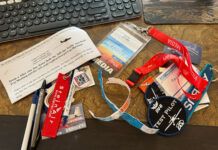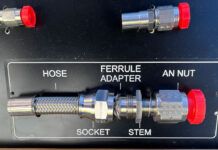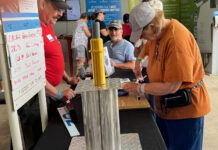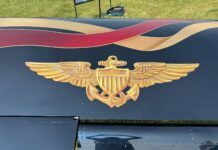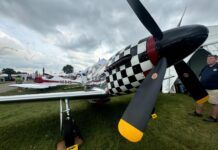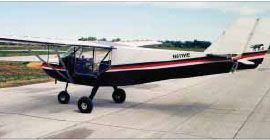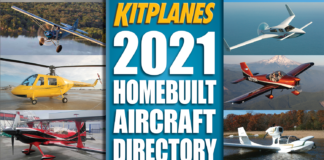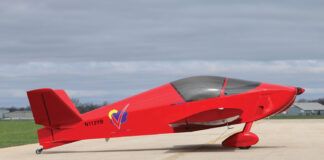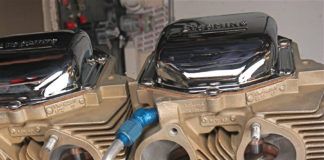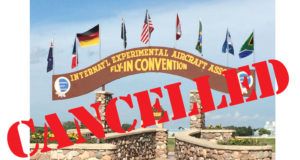 EAA’s decision to cancel AirVenture 2020 as a precaution against the coronavirus has created a tremendous ripple effect. Not only are your travel and leisure plans for the summer likely to have been upended, but it’s impacted the way manufacturers and suppliers reach their intended audience. With few exceptions, aviation—especially our corner of it—is pretty old school when it comes to outreach methods. Manufacturers like to have face-to-face contact to answer questions. Especially where aircraft kits are concerned, there’s the none-too-subtle art of showing off your design while simultaneously and skillfully revealing to the potential customer that you’re the real deal—a company whose principals are steady, honest, engaged and the kind you want to have a relationship with as your build progresses. That’s hard to do in a press release or YouTube video, though it’s certainly been tried.
EAA’s decision to cancel AirVenture 2020 as a precaution against the coronavirus has created a tremendous ripple effect. Not only are your travel and leisure plans for the summer likely to have been upended, but it’s impacted the way manufacturers and suppliers reach their intended audience. With few exceptions, aviation—especially our corner of it—is pretty old school when it comes to outreach methods. Manufacturers like to have face-to-face contact to answer questions. Especially where aircraft kits are concerned, there’s the none-too-subtle art of showing off your design while simultaneously and skillfully revealing to the potential customer that you’re the real deal—a company whose principals are steady, honest, engaged and the kind you want to have a relationship with as your build progresses. That’s hard to do in a press release or YouTube video, though it’s certainly been tried.
We love AirVenture not just for the opportunity to visit with friends and reimmerse in the world of homebuilt aircraft, but also because there’s usually a concentrated dose of “stuff going on.” New products, industry changes and updates, legal and regulatory issues announced during various fora—all things that keep us on the show grounds from dawn to dusk. We mine this deep vein of content for quick-turnaround stories for our website, it’s true, but you may not appreciate how much planning and idea-seeding happens at Oshkosh. We work our tails off for a week but feed for months on those stories, leads on projects and builders and, yes, the airplanes we’ve flown.
What does that mean for our coverage? For one, we’ll continue to hound—er, strongly request—information from across the industry. I write this a full month before AirVenture was supposed to begin and know from experience that a lot of companies are still finalizing their announcements at this point. Many, I suspect, are still hammering out details on the flight to AirVenture every year. I’m also aware of a few companies that have taken cancellation of both Sun ’n Fun and AirVenture as an opportunity to revise product timelines. Many companies across the spectrum—engines, airframes, avionics—have as one of their development hard points the release at one of the big airshows. Without that, I suspect we’ll see a more gradual, one could almost say organic rollout of new products and services over the course of the summer and fall. Of course, there are still significant economic and cultural issues in flux; it’s typical for some of the smaller businesses to ease up on the development accelerator in conditions like this.
The Virtual Booth
What I have heard over the course of my conversations this month is the willingness for companies to do more virtually, and some are pushing fairly hard to replace the “airshow experience” for customers. EAA, for its part, has been very successful with its webinars over the spring and the calendar only looks to expand the offerings over the summer. Its efforts to “replace” AirVenture will hinge on its Spirit of Aviation week (July 21-25), which will feature streaming presentations and forums, workshops and a “virtual exhibit space” with products and show specials. Garmin will have its own version of product tutorials presented virtually, and I know that Dynon will fill out the product tutorials and open discussions it has held through its Facebook page. You can expect to see more programs like Zenith’s virtual builder workshop (see Kate O’Connor’s feature) emerge through the year; I strongly suspect that if these are helpful to customers and moderately successful, they’ll continue in some form in our post-COVID world.
 Of course, we’ll continue to follow all of these developments and report on them first at here on our website and then showcase them here in the magazine. We’re also looking to expand on our Virtual Oshkosh section that gives companies another way to reach you. And, finally, we’re going to keep on with our video efforts to check in with companies and builders, as well as share updates on the products we’re testing and projects we’re working on.
Of course, we’ll continue to follow all of these developments and report on them first at here on our website and then showcase them here in the magazine. We’re also looking to expand on our Virtual Oshkosh section that gives companies another way to reach you. And, finally, we’re going to keep on with our video efforts to check in with companies and builders, as well as share updates on the products we’re testing and projects we’re working on.
We Must Be Nuts
Here’s a sampling of the reader feedback I thought you’d enjoy. This is from Raymond Henrie, who writes: “I was flipping through the July issue and Paul Dye’s article on rivnuts grabbed my attention. Unlike Paul, I love them! I have used them on all kinds of projects, including the two planes I have built. I’d like to add just a little useful information. First, I have found the ribbed rivnuts at a reasonable price on eBay, probably military surplus. Second, I prefer JB Weld as reinforcement to prevent turning because it has a thicker consistency, which I believe makes a stronger bond. Third, I hate nutplates because they have an interference fit to prevent loosing that also causes many stripped screws. I use a small rubber O-ring under the head as a kind of lock washer, and I have never had one come loose. I really love the homebuilding tips.” I’ll second the recommendation for “ribbed” rivnuts. I’ve used the “twist-resistant” rivet nuts sold by McMaster-Carr, both steel and aluminum, depending on the application, and have had very few problems. They’re comparably priced to aviation nutplates and can be installed quickly with the correct tool, though, like anything, proper technique makes all the difference.
Wooden It Be Nice?
The next missive comes from Larry Flesner, who points out an error when we said the KR2S was “originally an all-wood design.” “The fact that Ken Rand and Stu Robinson designed the first homebuilt to use wood-composite construction seems to be, unfortunately, lost to history,” he says. “The original KR1 was built using a wood fuselage, wood spars and composite-over-foam wings and tail surfaces. The KR2 followed and then, with builder input, the KR2S. Very few KRs are built the same due to builder changes but they remain, in my opinion, the best bang for the buck speed, ease of building and fun to fly homebuilts on the market today. I may be a bit biased, having 700+ hours in my stretched KR with an O-200 and having hosted a dozen or more annual KR Gatherings. But any honest exposure to the KR design would validate my opinion.” I appreciate the correction, Larry.
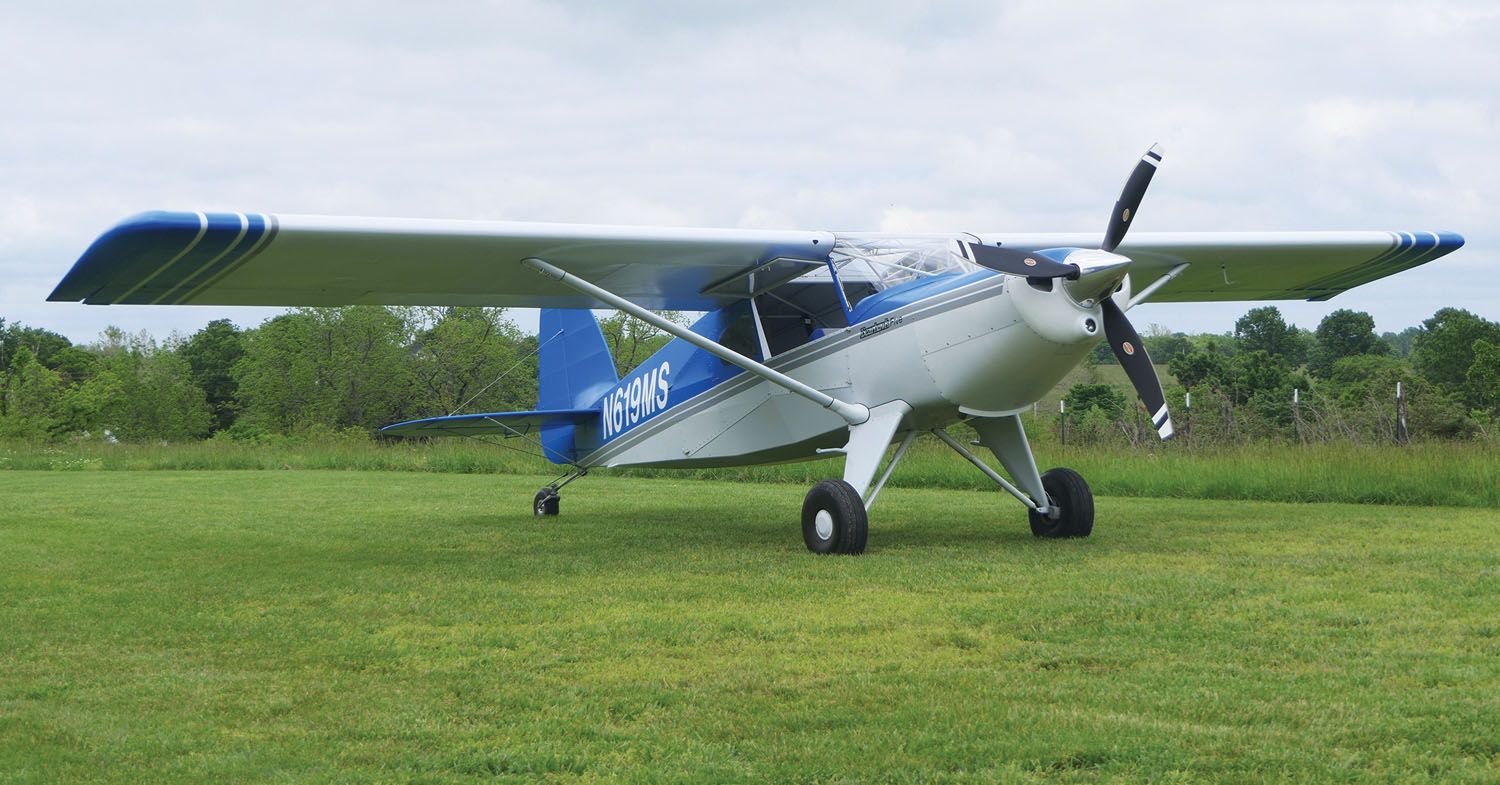
And This Bearhawk Makes 5
One new airplane design we were really hoping to see up close at AirVenture is the new Bearhawk Model 5. I had a chance to talk to Bearhawk’s Mark Goldberg via Zoom and he elaborated on the design choices and filled me in on the development timeline. In fact, how it came to be is a story by itself—basically it was created by Bearhawk designer Bob Barrows for a fellow builder, “a big guy,” who started the project but could not finish because of health issues. Enter Collin Campbell, multi-Bearhawk builder, who took on the project and saw it to completion earlier this year.
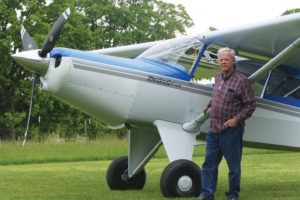
Bob Barrows is a clever guy when it comes to design, so the Model 5 keeps most of the familiar four-place Bearhawk technologies and philosophies. “It doesn’t differ in a lot of ways from the current production Model 4, but it’s wider and longer,” Goldberg told me. “The shock struts are set up differently… and the other difference is that it’s designed to accept one of the heavier angle-valve [Lycoming] 540 engines.” Even better, the prototype has a custom IO-580 engine on the same platform with 315 hp. Beyond that, “it’s really incremental improvements, not a whole lot of difference in the way they go together,” says Goldberg. The all-metal wing is the same as on the current four-place model, for example, and the basic design of the tube-and-fabric fuselage follows the basic concepts of the four-seater, though the fuselage cage will obviously be different and there are changes to the tail surfaces as well.
Similar to the four-place, sure, just bigger. Overall, the Model 5 is 24 inches longer than the four-place, much of that going into the cabin. Goldberg says that the interior volume is greater than a Cessna 185’s—though that doesn’t mean it’s the same shape—and if the airplane is built light, it should have a useful load of nearly 1500 pounds. (Maximum gross is expected to be 3000 pounds.) Predicted cruise speeds are in the 160-mph range with the IO-580, and while that’s not blazing fast, the Bearhawk is more about getting into and out of short strips and climbing well in high-density-altitude situations, which it most definitely should do with the promised power loading of less than 10 pounds per horsepower. Incidentally, the Model 5 can accept any of the six-cylinder Lycomings, though it’s expected most builders will go for the angle-valve engines of around 300 hp.
As I write this, the sole Model 5 is continuing its Phase I flight testing, with a lot of work validating the weight-and-balance envelope and verifying flying qualities heavily loaded still to come. Goldberg told me that even with a sodden turf strip, the Model 5 was having no trouble getting out of a short runway. Bearhawk is also expected to test different tire sizes for the Model 5, since the lengthened fuselage actually decreases the resting angle of attack and makes full-stall landings more difficult.
Of course, with just the one airplane flying, much remains to be done to get kits and plans out the door. According to Goldberg, “Our hope is to have all the tooling done by the first of July, and then I’ll send down the materials for the first production run of kits. And we hope to have the first kits in October. Which is what I already promised the two guys who have sent me deposits for kits.”
Bearhawk has components assembled in Mexico, including the Model 5’s quickbuild wings that carry over from the Model 4. Kit prices have not been finalized, but a full quickbuild version of the Model 4 runs $47,000, which includes all the metalwork but not the covering system, which is of the builder’s choice. It also doesn’t include the windshield (a common Cessna part), wheels and brakes, cables, pulleys and hardware. Obviously, the engine, avionics and prop are extra, too.
You can bet we’ll keep track of this project and one of us will pay Campbell and company a visit a soon as we can.

